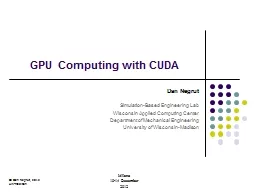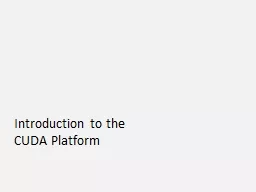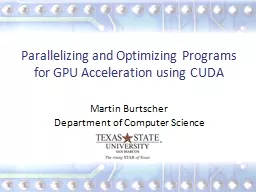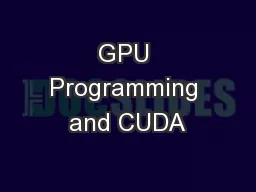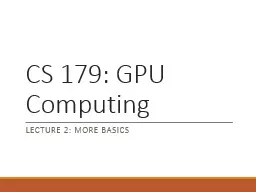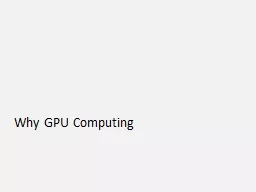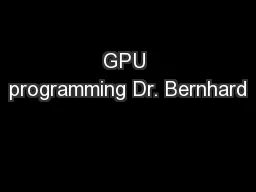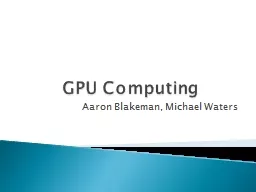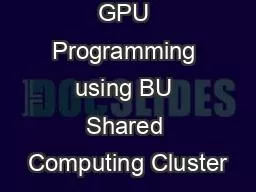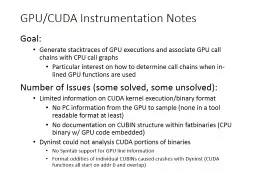PPT-GPU Computing with CUDA
Author : briana-ranney | Published Date : 2019-11-08
GPU Computing with CUDA Dan Negrut 2012 UWMadison Dan Negrut SimulationBased Engineering Lab Wisconsin Applied Computing Center Department of Mechanical Engineering
Presentation Embed Code
Download Presentation
Download Presentation The PPT/PDF document "GPU Computing with CUDA" is the property of its rightful owner. Permission is granted to download and print the materials on this website for personal, non-commercial use only, and to display it on your personal computer provided you do not modify the materials and that you retain all copyright notices contained in the materials. By downloading content from our website, you accept the terms of this agreement.
GPU Computing with CUDA: Transcript
Download Rules Of Document
"GPU Computing with CUDA"The content belongs to its owner. You may download and print it for personal use, without modification, and keep all copyright notices. By downloading, you agree to these terms.
Related Documents

